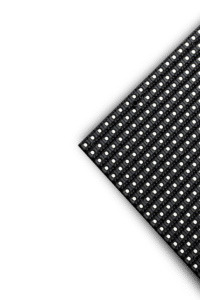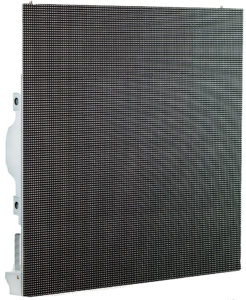What do I need to know about buying an LED sign?
If you are reading this post, you are considered, or have to decided on, buying an LED sign. However, there are a lot of technical terms and jargon that the average business owner won’t know, like bulb types, refresh rates, module construction, and more.
At GDTech, we want to make sure you are well informed and can make the best decision for your business. That’s why we have compiled six technology points that are important to know when considering an LED sign. Here are the points you should know before you buy:
Bulbs
What bulb does the LED sign use?
DIP
Digital screens using DIP (Dual Inline Package) generally separate the key colors red, green, and blue (R, G, B) on different LED bulbs. Occasionally another red LED will be added resulting in one green, one blue, and two red lights in a square-shaped pixel. Digital displays using DIP are less expensive to manufacture, but their brightness and resolution are lower due to older technology.
SMD
Digital screens using SMD (Surface Mount Diode) integrate all three key colors (R, G, B) into one bulb, resulting in a much smaller and more compact LED panel. Digital LED panels using SMD have a dramatically brighter screen. Since the technology used in SMD screens is more advanced, it has a higher picture quality and displays a more vivid image. SMD screens run on lower voltages and currents and use less power overall. The increased energy efficiency produces less heat, which leads to reduced breakdown of components, allowing for a longer lifespan.

Module
What are modules?
An LED module is the basic building block of an LED sign. The module houses the LED bulbs and the PCB and provides protection for the electrical connection between the two.
How are modules fitted together?
Modules are fitted together by being placed into a cabinet or a frame designed for the size of the module by the manufacturer. These cabinets are typically made out of sheet metal, but can be made out of other materials. At GDTech, our modules are made from aluminum.
How are modules waterproofed?
For waterproofing, industry standard LED modules are constructed with plastic backing and drenched in silicone to keep out water.
An alternative to plastic and silicone waterproofing is encasing signs in high-quality aluminum that keeps water out and disseminates heat effectively.

How are modules cooled?
Heat that is generated by the LED bulbs needs to be released, especially as pixel pitch (the distance between the bulbs) decreases and the bulbs are closer together. Many LED signs rely on fans blowing on the back of electronic components to create airflow and to blow hot air away from the sign.
GDTech uses aluminum to create a heat sink at three different channels, from the bulbs to the modules, to the cabinet. Each effectively eliminates heat, which means there is no need for fans.
Printed Circuit Board
What is a PCB?
A PCB, or printed circuit board, provides a medium for connecting electronic components. This board, typically a green color, might be familiar from images of computers or other technology components. For an LED display made with SMD, the bulbs are soldered directly onto the PCB.
What should you look for in a PCB?
The typical PCB is 2 to 3 layers. The more layers a PCB has, the more sturdy and stable it is. A thinner PCB will be more flimsy and easier to break. GDTech PCBs are made up of 8 layers, making them very stable.
Refresh Rates
What is a refresh rate?
Refresh rate refers to how frequently the image on a digital display is refreshed, referred to in terms of hertz. The higher the refresh rate, the better the screen will appear. Hertz is one cycle per second, so 3950 Hz would be 3950 refreshes every second.

Color
How many colors can the display handle?
An important consideration for an LED display is color capabilities. How many colors can the LED sign effectively produce?
How do LED signs handle grayscale?
Many signs do not handle grayscale well because of the difficulty in accomplishing different shades of gray. If you want to use your sign for night displays, this is an important consideration. The industry standard for grayscale is 14 bits. GDTech’s signs can reach 16-bit grayscale.

Brightness
What is nit?
A nit is a unit of measurement used to describe brightness.
So how many nits should a sign have?
A sign needs to have more nits than direct sunlight in order to appear bright in daylight. Sunlight is 5,000 nits. The brighter the sign, the more visible it will be in daylight.
DIP standard is 18,000 nits
DIP signs can achieve a high brightness, but are much less energy-efficient and have a lower resolution.